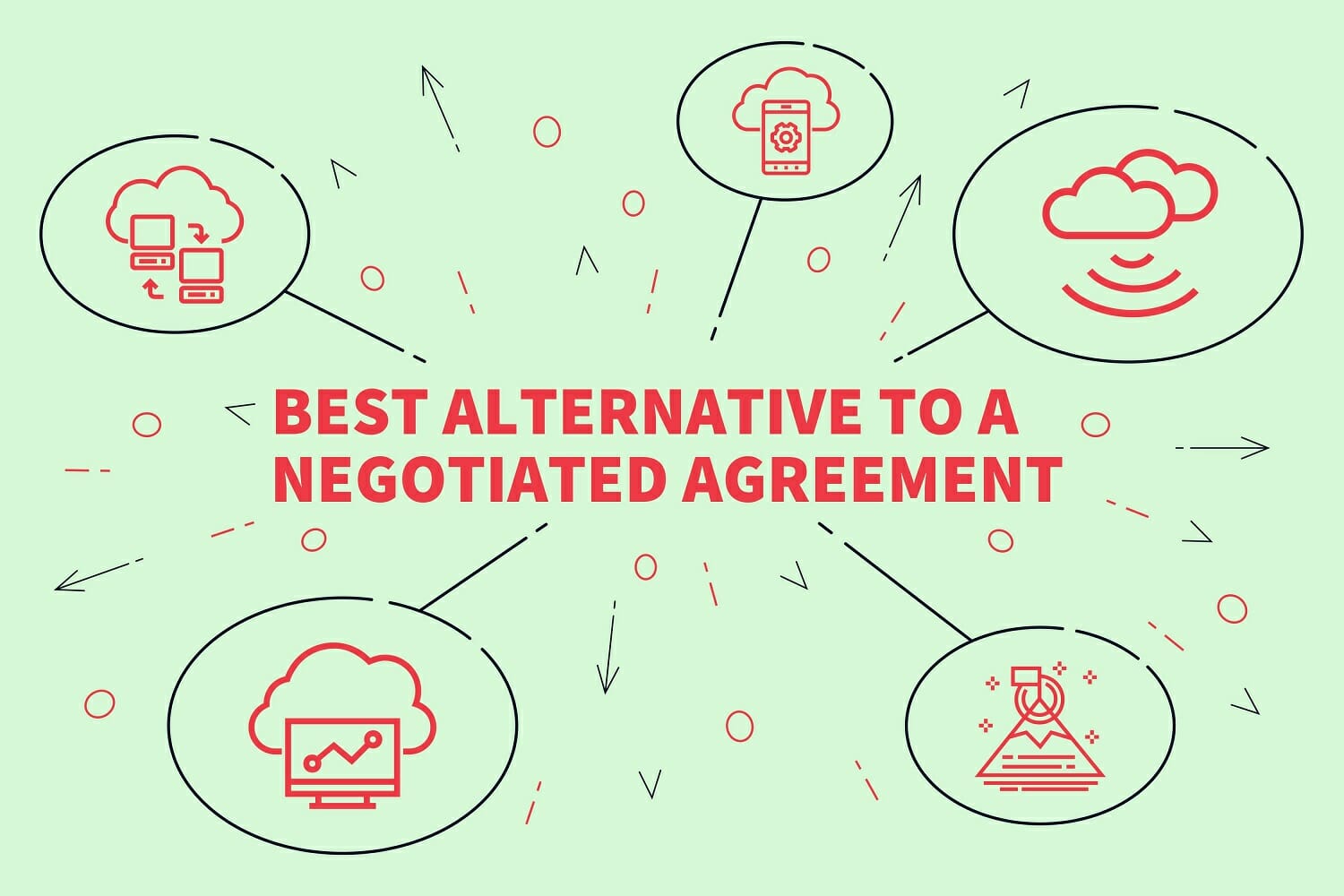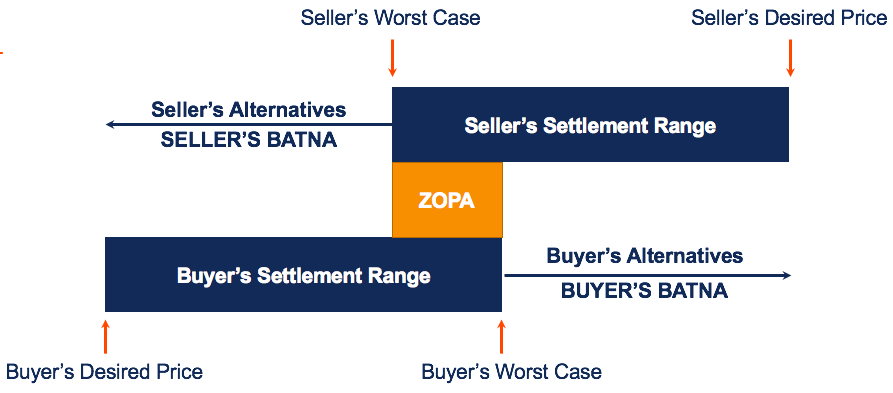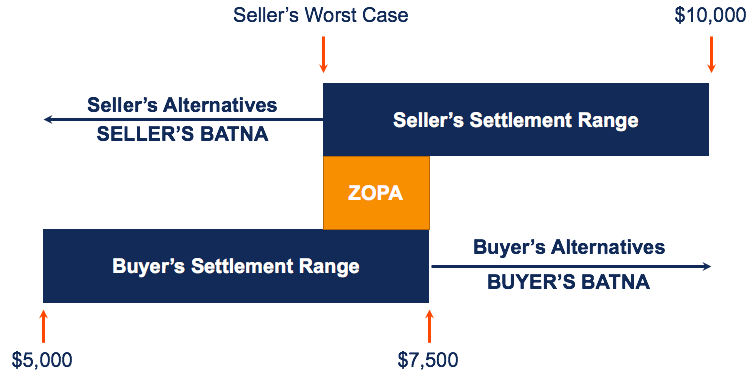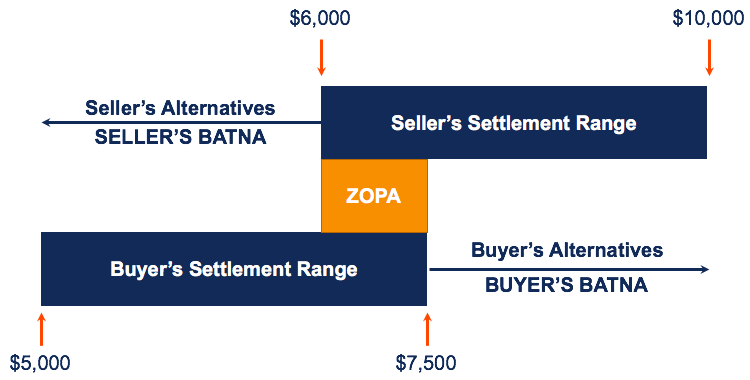
BATNA is an acronym that stands for Best Alternative To a Negotiated Agreement. It is defined as the most advantageous alternative that a negotiating party can take if negotiations fail and an agreement cannot be made. In other words, a party’s BATNA is what a party’s alternative is if negotiations are unsuccessful. The term BATNA was originally used by Roger Fisher and William Ury in their 1981 book entitled “Getting to Yes: Negotiating Without Giving In.”

BATNA is often used in negotiation tactics and should always be considered before a negotiation takes place. It is never wise to enter into a serious negotiation without knowing your BATNA. The value of knowing your best alternative to a negotiated agreement is that:
The following diagram illustrates each party’s best alternative to a negotiated agreement (seller and buyer):

Colin needs a car and is negotiating with Tom to purchase his car. Tom offers to sell his car to Colin for $10,000. Colin scours through Craigslist and finds a similar car to which he assigns a dollar value of $7,500. Colin’s BATNA is $7,500 – if Tom does not offer a price lower than $7,500, Colin will consider his best alternative to a negotiated agreement. Colin is willing to pay up to $7,500 for the car but would ideally want to pay $5,000 only. The relevant information is illustrated below:

In the diagram above, if Tom demands a price higher than $7,500, Colin will take his business elsewhere. In the example, we are not provided with Tom’s BATNA. If we assume that Tom can sell his car to someone else for $8,000, then $8,000 is Tom’s BATNA. In such a scenario, an agreement will not be made, as Tom is only willing to sell for a minimum of $8,000, while Colin is only willing to purchase at a maximum of $7,500.
If Tom’s best alternative to the deal is selling the car to a dealership, which would offer him $6,000, then both parties can come to an agreement because Tom’s reservation point would be $6,000. In the situation described, the diagram would look as follows:

In this case, there is a zone of potential agreement – $6,000 to $7,500. Somewhere within this range, the two parties should be able to come to an agreement.
As illustrated in the example above, having a best alternative to a negotiated agreement before entering into negotiations is important. Had Colin not had a BATNA, Tom would have had more bargaining power. Knowing Colin’s BATNA is at $7,500, the highest price that Tom would be able to sell his car to Colin for is $7,500.
Here is a process developed by Harvard Law School to develop the best alternative to a negotiated agreement:
Thank you for reading CFI’s guide on BATNA. To keep learning and advancing your career, the following resources will be helpful: